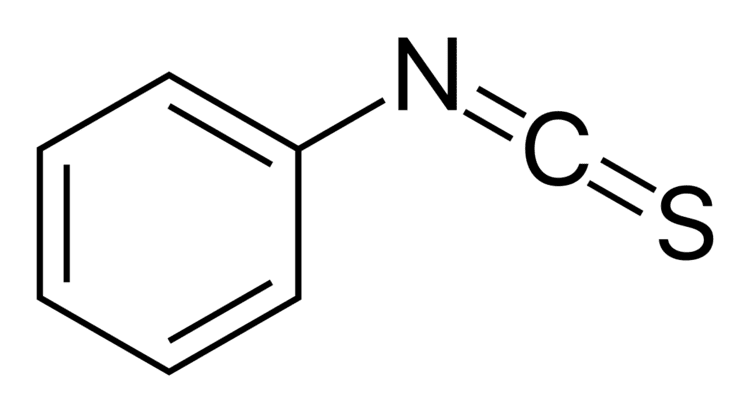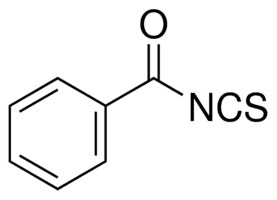 | ||
Jed fahey sc d on isothiocyanates the nrf2 pathway moringa sulforaphane supplementation
Isothiocyanate is the chemical group –N=C=S, formed by substituting the oxygen in the isocyanate group with a sulfur. Many natural isothiocyanates from plants are produced by enzymatic conversion of metabolites called glucosinolates. These natural isothiocyanates, such as allyl isothiocyanate, are also known as mustard oils. An artificial isothiocyanate, phenyl isothiocyanate, is used for amino acid sequencing in the Edman degradation.
Contents
- Jed fahey sc d on isothiocyanates the nrf2 pathway moringa sulforaphane supplementation
- Allyl isothiocyanate determintaion
- Synthesis and reactions
- Biological activity
- Coordination chemistry
- References

Allyl isothiocyanate determintaion
Synthesis and reactions

The general method for the formation of isothiocyanates proceeds through the reaction between a primary amine (e.g. aniline) and carbon disulfide in aqueous ammonia. This results in precipitation of the ammonium dithiocarbamate salt, which is then treated with lead nitrate to yield the corresponding isothiocyanate. Another method relies on a tosyl chloride mediated decomposition of dithiocarbamate salts that are generated in the first step above.

Isothiocyanates may also be accessed via the thermally-induced fragmentation reactions of 1,4,2-oxathiazoles. This synthetic methodology has been applied to a polymer-supported synthesis of isothiocyanates.
Isothiocyanates are weak electrophiles. Akin to the reactions of carbon dioxide, nucleophiles attack at carbon.
Reflecting their electrophilic character, isothiocyanates are susceptible to hydrolysis.
Biological activity

Isothiocyanates occur widely in nature and are of interest in food science and medicine. Vegetable foods with characteristic flavors due to isothiocyanates include wasabi, horseradish, mustard, radish, Brussels sprouts, watercress, papaya seeds, nasturtiums, and capers. These species generate isothiocyanates in different proportions, and so have different, but recognisably related, flavors. They are all members of the order Brassicales, which is characterised by the production of glucosinolates, and of the enzyme myrosinase, which acts on glucosinolates to release isothiocyanates.


Phenethyl isothiocyanate (PEITC) and sulforaphane inhibit carcinogenesis and tumorigenesis in certain circumstances. Their mechanism of action is proposed to involve inhibition of cytochrome P450 enzymes, which oxidize compounds such as benzo[a]pyrene and other polycyclic aromatic hydrocarbons (PAHs) into more polar epoxy-diols, which can then cause mutation and induce cancer development. Phenethyl isothiocyanate (PEITC) has been shown to induce apoptosis in certain cancer cell lines, and, in some cases, is even able to induce apoptosis in cells that are resistant to some currently used chemotherapeutic drugs, for example, in drug-resistant leukemia cells that produce the powerful apoptosis inhibitor protein Bcl-2. Furthermore, isothiocyanates have been the basis of a drug in development that replaces the sulfur bonds with selenium, with far stronger potency against melanoma. Certain isothiocyanates have also been shown to bind to the mutated p53 proteins found in many types of tumors, causing an increase in the rate of cell death.
The results on the genotoxic effects of the isothiocyanates and glucosinolate precursors are conflicting. Some authors report weak genotoxicity for allyl isothiocyanate and phenethyl isothiocyanate. Induction of point mutations in Salmonella TA98 and TA100, repairable DNA damage in E.coli K-12 cells, and clastogenic effects in mammalian cells by extracts from cruciferous vegetables have also been observed. The goitrogenic effect of Brassicaceae vegetables, interfering with iodine uptake, is also a concern at elevated doses. The average intake of such sulfur-containing compounds through supplementation should not exceed normal levels of consumption.
The Transcription factor Nrf2 is required for isothiocyanate pharmacologic activity.
Coordination chemistry
Isothiocyanate and its linkage isomer thiocyanate are ligands in coordination chemistry. Thiocyanate is more common ligand.
